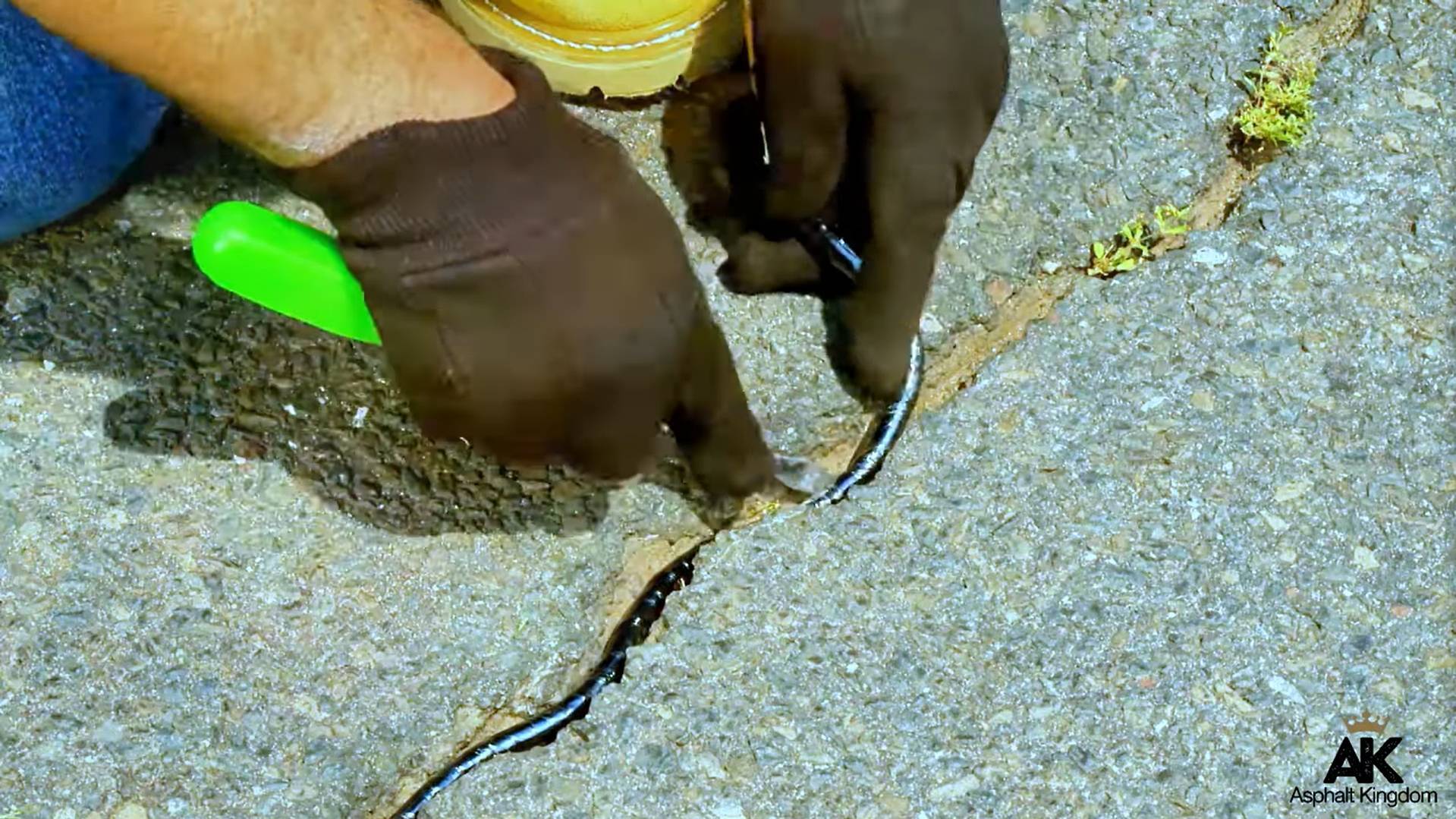If you’re like most property owners we know, January is a time for planning out your year and your budget. It can be hard to guess what it will cost to maintain your pavement when it’s covered in ice and snow, but we have some guidelines you can use to get you close enough for budgeting. Like most things, adding a 10% buffer can save you down the line, as prices tend to increase in March and April when the industry re-sets its annual fees.
1. Measure or Estimate Your Cracks
If you can see your parking lot right now, try to assess the condition of a section that’s roughly 10 feet by 10 feet. Measure the linear feet of cracks.
Now, figure out how big your parking lot is and just do the math:
If your parking lot is 1,000 square feet, then you can estimate you have 10 times the linear feet of cracks on the entire lot, and you can order enough materials accordingly.
If you can’t see your parking lot, here’s a gauge by age:
| Age of Asphalt | Normal % of cracks |
|---|---|
| 5 - 10 Years | ~ 20% |
| 10 - 15 Years | ~ 35% |
| 15 - 20 Years | ~ 50% |
So if your parking lot is 5 - 10 years old and 1,000 square feet, we would assume 200 linear feet of cracks, and so on.
Beyond crack repair, it might be time for sealcoating too.
2. Estimate Sealcoating Costs
If the parking lot in your golf course or hotel is between 2 and 5 years old, assume you’ll need one coat of sealer.
If your hospital or car dealership parking lot is older than that, you’ll want to apply two coats of sealer every 3 years to keep the surface hydrated and to protect the asphalt from oxidizing under the sun. (Not to mention how much better a rich black parking lot looks than a faded one!)
Not sure how many square feet your lot is? You can easily measure your lot using Google Earth technology and Asphalt Kingdom's parking lot measurement tool.

3. Calculate Your Linear Feet for Parking Lines
Of course, if you're sealcoating then you don't want to forget about line striping. This will restore the parking lines and make them nice and bright for your parking lot users.
The standard parking space is approximately 18 feet long and 9 feet wide. Handicap spaces may be wider, depending on whether they are van-accessible or not, but the length of their parking lines should be the same (18'). See more measurements here.
With that in mind, you can calculate the linear feet of your parking lot spaces. You can use this formula as a general estimation:
For single-lined parking spots:
# of parking lot spaces multiplied by 18' = linear feet you need to restripeFor double-lined parking spots:
# of parking lot spaces multiplied by 36' = linear feet you need to restripe
If you also have pedestrian crosswalks, diagonal hatching, and other lines, you can estimate that with eye-balling or with a measuring wheel to walk the lines.
So you have the estimates...now what?
If you've successfully completed the above 3 items, you should now have:
- In linear feet, the amount of cracks you can reasonably expect to repair
- In square feet, the size of your parking lot and how many coats of sealer
- In linear feet, how much you expect to line stripe
The next step is to use our pavement calculators, which are a great help to determine how much material you’ll need to complete your job. In a spreadsheet, record the amount of product needed for each of these maintenance items and their costs. Add everything up with a 10% buffer to cover rising prices, and you'll have your budget for asphalt maintenance supplies.





-1.jpg)
.jpg)